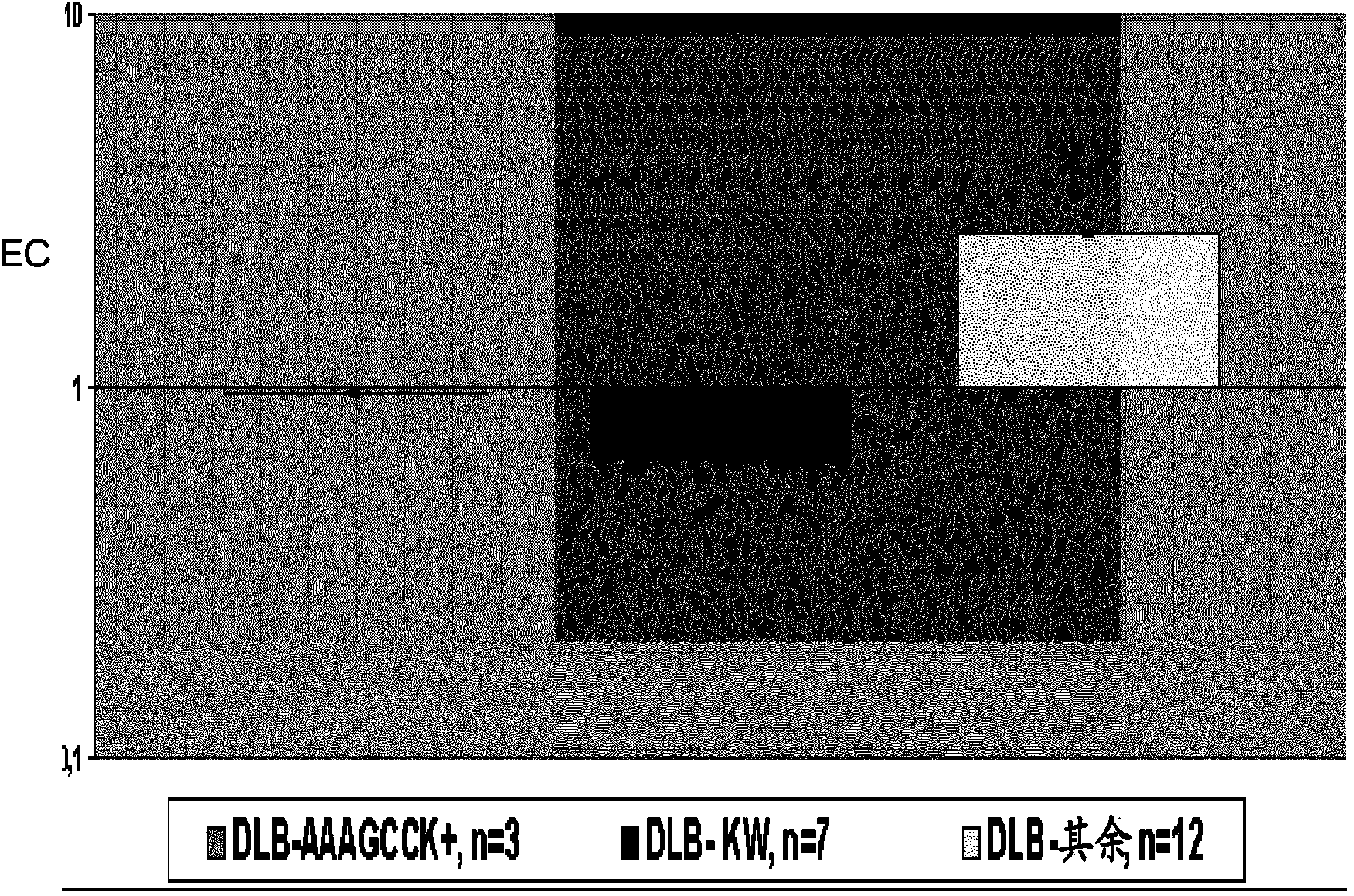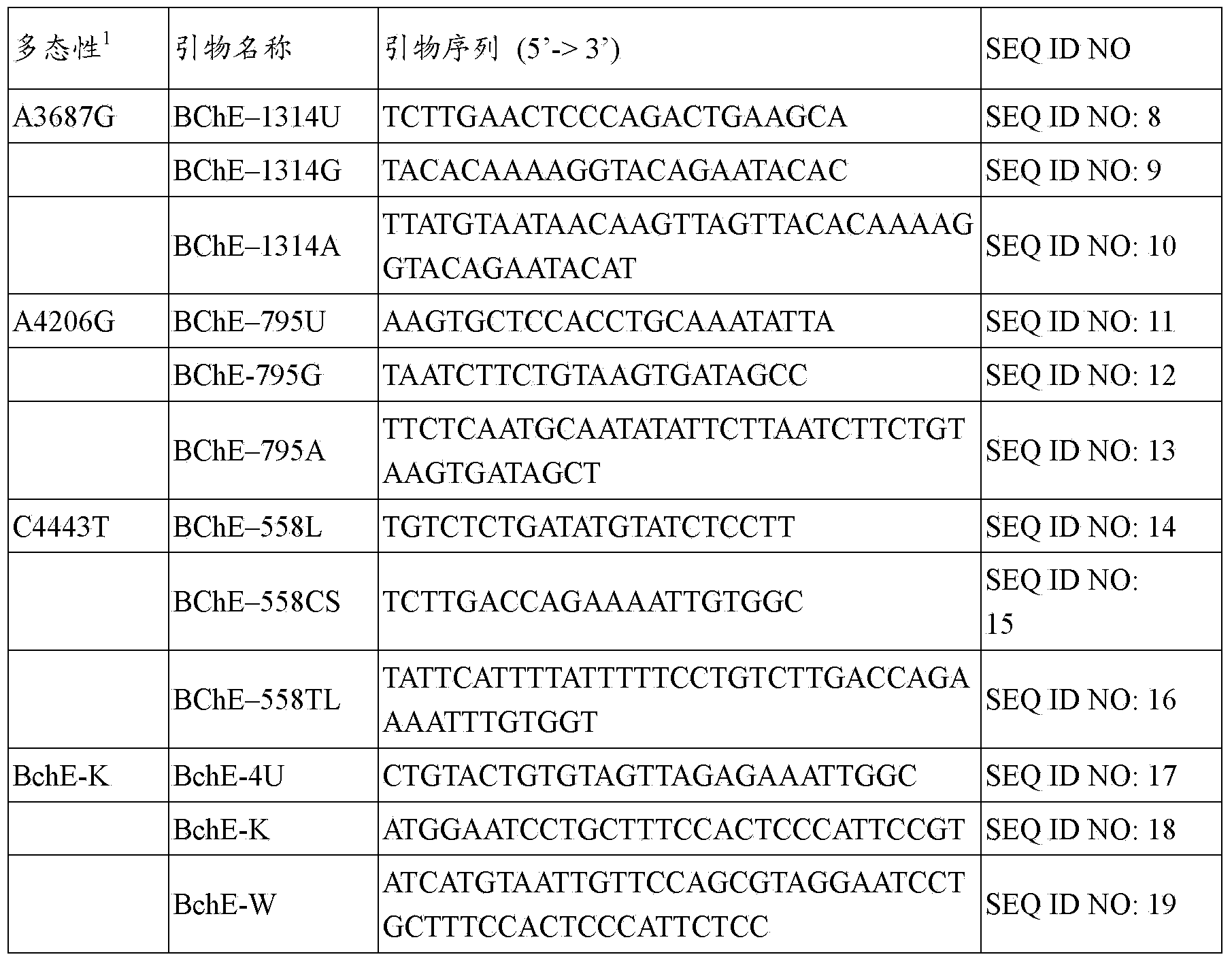Genetic marker for the diagnosis of dementia with lewy bodies
A technology for dementia with Lewy bodies and biological samples, applied in the medical field, can solve the problem of no significant correlation between DLB phenotypes, and achieve the effect of reducing death and increasing specificity
- Summary
- Abstract
- Description
- Claims
- Application Information
AI Technical Summary
Problems solved by technology
Method used
Image
Examples
Embodiment Construction
[0056] Post-mortem sample
[0057] Post-mortem frontal cortex samples and their clinical and neuropathological diagnoses were assisted by the Bellvitge Institute (BrainNet Europe) of the Neurological Tissue Bank and Neuropathology Brain Bank of the University of Barcelona (BrainNet Europe) in accordance with established rules of the local ethics committee. It corresponds to 24 brains with common Lewy body disease (cLBD) (age at death: 79.9, age range from 64 to 90; female to male ratio 1.5:1), 12 brains with pure Lewy body dementia (pDLB) ( Age at death: 74.4, age range from 60 to 80; female to male ratio 1:2), 26 AD brains (age at death: 78.1, age range from 61 to 95; female to male ratio 1:1.1), and 23 controls brain (age at death: 68.5, age range from 54 to 83; female to male ratio 1:1.1).
[0058] Neuropathological examination found that all AD brains showed Braak and Braak's AD stage VI. Braak and Braak are stages to assess / quantify AD in the brain. It is used by neu...
PUM
 Login to View More
Login to View More Abstract
Description
Claims
Application Information
 Login to View More
Login to View More - R&D
- Intellectual Property
- Life Sciences
- Materials
- Tech Scout
- Unparalleled Data Quality
- Higher Quality Content
- 60% Fewer Hallucinations
Browse by: Latest US Patents, China's latest patents, Technical Efficacy Thesaurus, Application Domain, Technology Topic, Popular Technical Reports.
© 2025 PatSnap. All rights reserved.Legal|Privacy policy|Modern Slavery Act Transparency Statement|Sitemap|About US| Contact US: help@patsnap.com



